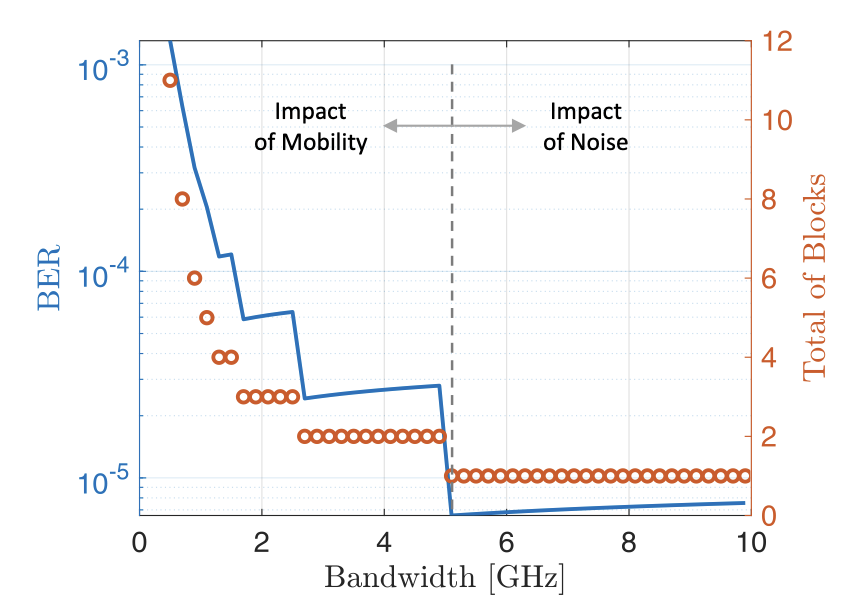Literature Database Entry
walch1994evaluating
Markus Walch, "Evaluating Parallel Processing of Communication Protocols," PhD Thesis, School of Electrical Engineering and Computer Science (EECS), TU Berlin (TUB), October 1994. (Advisor: Adam Wolisz; Referees: Adam Wolisz and Radu Poescu-Zeletin)
Abstract
With the advent of high speed networks offering capacities in excess of 100 Megabit/s protocol processing in an end system has become a bottleneck in advanced communication systems.Many scientists argue that only off-loading the CPU by providing dedicated sub-systems for protocol processing has the potential of providing the required performance. A new communication architecture is proposed to remove the bottleneck of protocol processing in an end system. The network adapter is upgraded to an intelligent communication subsystem. There are various architectures for a new communication subsystem, but most architectures provide multiple processors for parallel processing of communication protocols. The performance gain achieved by parallel protocol processing is controversial. Experiments have been made showing that parallelization of communication protocol may degrade performance. On the other hand, many prototype realizations have shown that a performance gain can be achieved. Whether a gain of factor 2 or 20 is more realistic, is not commonly agreed upon. This is due to the fact that all proposals for parallelizing protocol processing consider only a specific parallelism model and a specific runtime environment. A comprehensive comparison of different parallelism models and different runtime systems has not been done. We develop a methodology which allows such a comprehensive comparison and present quantitative results for a selected transport protocol. We start by studying informal protocol descriptions and develop concepts to describe the maximum degree of parallel protocol processing in an abstract manner. We have chosen performance enhanced formal description techniques for specifying parallel protocol processing. By integrating different parallelism models and the properties of a runtime system in the abstract specification we derive intentional specifications. Intentional specifications describe the behaviour of a planned parallel implementation. Using performance models automatically derived from enhanced formal specifications we are able to quantitatively study parallel protocol processing on different levels of abstraction. From the abstract specification an upper bound can be derived for the performance gain to be expected from parallel protocol processing. It allows the comparison of different parallelism models on an abstract level, and it allows the performance on a given runtime system to be estimated with a high level of reliability from an intentional specification. Our methodology is justified by comparing the estimated performance to measured performance of a prototype implementation. In addition, we present a quantitative comparison of different parallelism models for varying characteristics of a runtime system for a selected transport protocol.
Quick access
Contact
Markus Walch
BibTeX reference
@phdthesis{walch1994evaluating,
author = {Walch, Markus},
title = {{Evaluating Parallel Processing of Communication Protocols}},
advisor = {Wolisz, Adam},
institution = {School of Electrical Engineering and Computer Science (EECS)},
location = {Berlin, Germany},
month = {10},
referee = {Wolisz, Adam and Poescu-Zeletin, Radu},
school = {TU Berlin (TUB)},
type = {PhD Thesis},
year = {1994},
}
Copyright notice
Links to final or draft versions of papers are presented here to ensure timely dissemination of scholarly and technical work. Copyright and all rights therein are retained by authors or by other copyright holders. All persons copying this information are expected to adhere to the terms and constraints invoked by each author's copyright. In most cases, these works may not be reposted or distributed for commercial purposes without the explicit permission of the copyright holder.
The following applies to all papers listed above that have IEEE copyrights: Personal use of this material is permitted. However, permission to reprint/republish this material for advertising or promotional purposes or for creating new collective works for resale or redistribution to servers or lists, or to reuse any copyrighted component of this work in other works must be obtained from the IEEE.
The following applies to all papers listed above that are in submission to IEEE conference/workshop proceedings or journals: This work has been submitted to the IEEE for possible publication. Copyright may be transferred without notice, after which this version may no longer be accessible.
The following applies to all papers listed above that have ACM copyrights: ACM COPYRIGHT NOTICE. Permission to make digital or hard copies of part or all of this work for personal or classroom use is granted without fee provided that copies are not made or distributed for profit or commercial advantage and that copies bear this notice and the full citation on the first page. Copyrights for components of this work owned by others than ACM must be honored. Abstracting with credit is permitted. To copy otherwise, to republish, to post on servers, or to redistribute to lists, requires prior specific permission and/or a fee. Request permissions from Publications Dept., ACM, Inc., fax +1 (212) 869-0481, or permissions@acm.org.
The following applies to all SpringerLink papers listed above that have Springer Science+Business Media copyrights: The original publication is available at www.springerlink.com.
This page was automatically generated using BibDB and bib2web.

